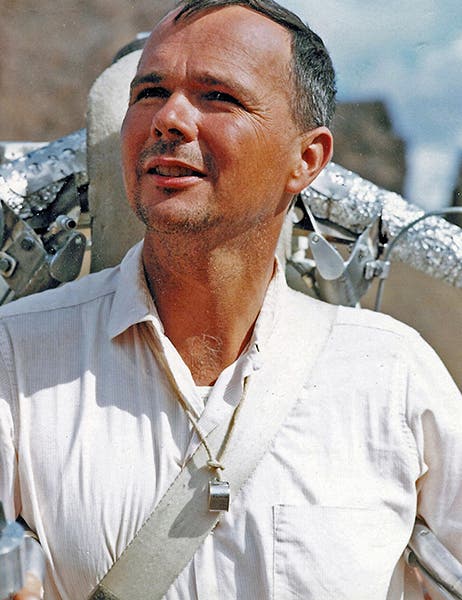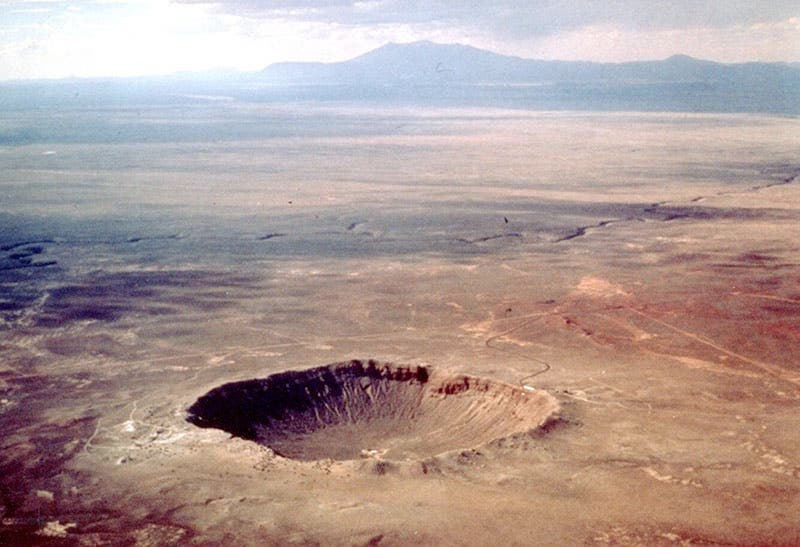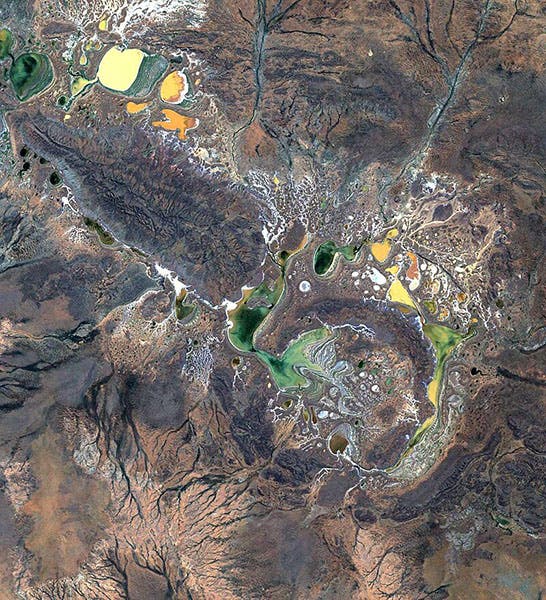Scientist of the Day - Eugene Shoemaker
Eugene Shoemaker, an American geologist, died on July 18, 1997, age 69, in an accident in Australia. In the early 1960s, Shoemaker became interested in the geology of places besides Earth, and he almost single-handedly created the field of planetary geology, founding the Astrogeology branch of the US Geological Survey in 1963. And was he ever in the right place at the right time! As the Apollo program warmed up in the mid-1960s, Shoemaker found himself in great demand by the space program, asked to teach astronauts how to identify minerals and collect rock samples and to design missions that would yield geological information. He very much wanted to be the first geologist to go to the Moon, but he was diagnosed with Addison's disease, a failure of the adrenal glands that requires daily cortisone injections, which eliminated him from any consideration for astronaut status, to his great consternation. Thus, Harrison Schmitt ended up on Apollo 17 as the first geologist to walk on the Moon.
But Shoemaker (known to everyone as Gene) found plenty to do here on Earth. He had begun his foray into astrogeology in the late 1950s by becoming the world’s authority on Meteor Crater (also known as Barringer Crater) in Arizona (third image), confirming that it was an impact crater by discovering shocked quartz within the crater. He subsequently began to pursue impact craters world-wide. We might not think of a terrestrial crater as an extra-terrestrial geological landform, but in fact, all those impactors came from outer space. Shoemaker developed a further interest in any planetary objects that cross Earth’s orbit, which led him to comets, and so he became a comet hunter, along with his wife Carolyn, an astronomer (fifth image). They discovered many comets, eight of them with a fellow comet hunter named David Levy. But it was the ninth joint discovery that provided the spectacle. Comet Shoemaker-Levy 9 (it should be Shoemaker-Shoemaker-Levy 9) was spotted in 1993 and was found to be in fragments, broken into 21 parts by a previous passage near Jupiter, and now in orbit around Jupiter. Over 6 days in July of 1994, each sparkling fragment plunged into the dense Jovian atmosphere, one pearl after the other, in a dramatic series of collisions that was given prime world-wide coverage and made the Shoemakers (and Levy) household names. In an interesting coincidence, Fragment G, the largest fragment, splashed down on July 18, 1994, exactly 30 years ago today.
Just 3 years later, in 1997, Eugene and Carolyn were in central Australia, searching for (and finding) more impact craters in the outback, when, near Alice Springs, Eugene swerved to avoid an oncoming truck, as did the oncoming vehicle, and because one driver was brought up on Australian rules of the road and the other American, they swerved in the same direction and collided head on. Eugene was killed instantly, and Carolyn was seriously hurt. The small community of astrogeologists took the loss hard, as Gene was their universally acknowledged leader. The NEAR spacecraft (Near Earth Asteroid Rendezvous) was already on its way to the asteroid Eros (see our post on Eros), and it was renamed the NEAR-Shoemaker spacecraft en route in his honor. And when the Lunar Prospector mission intentionally crashed into the Moon near its South Pole in 1999, it carried with it a small vial with some of Shoemaker's ashes. The foil wrapping of the vial bore an inscription, several lines spoken by Juliet in Romeo and Juliet, Act 3, Scene 2, and whoever thought this up deserves his or her own extraterrestrial burial, it is so beautifully appropriate:
And, when he shall die
Take him and cut him out in little stars
And he will make the face of heaven so fine
That all the world will be in love with night
And pay no worship to the garish sun
Shoemaker is still the only terrestrial who has part of his earthly remains on a solar system body that is not Earth.
For an earthside memorial, Shoemaker has a pretty good one. An impact crater in Australia was renamed the Shoemaker impact structure, in his honor, in 1998 (sixth image).
William B. Ashworth, Jr., Consultant for the History of Science, Linda Hall Library and Associate Professor emeritus, Department of History, University of Missouri-Kansas City. Comments or corrections are welcome; please direct to ashworthw@umkc.edu.












